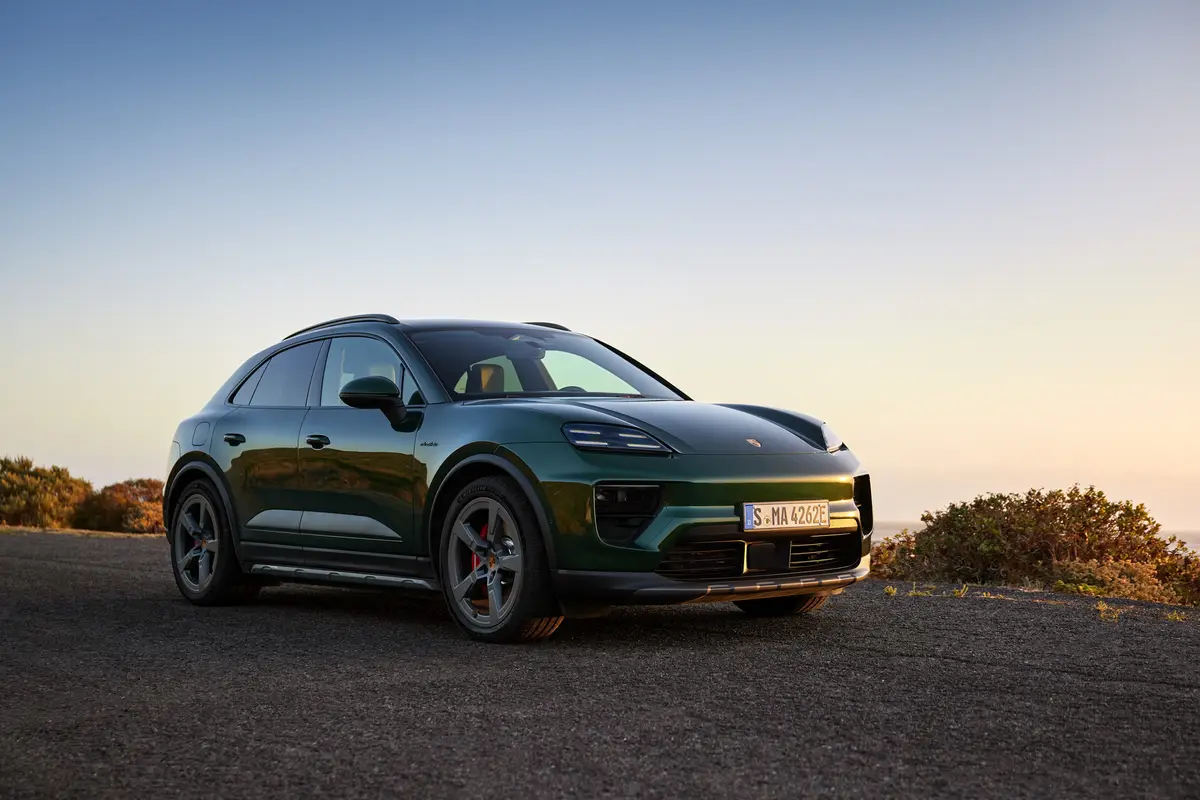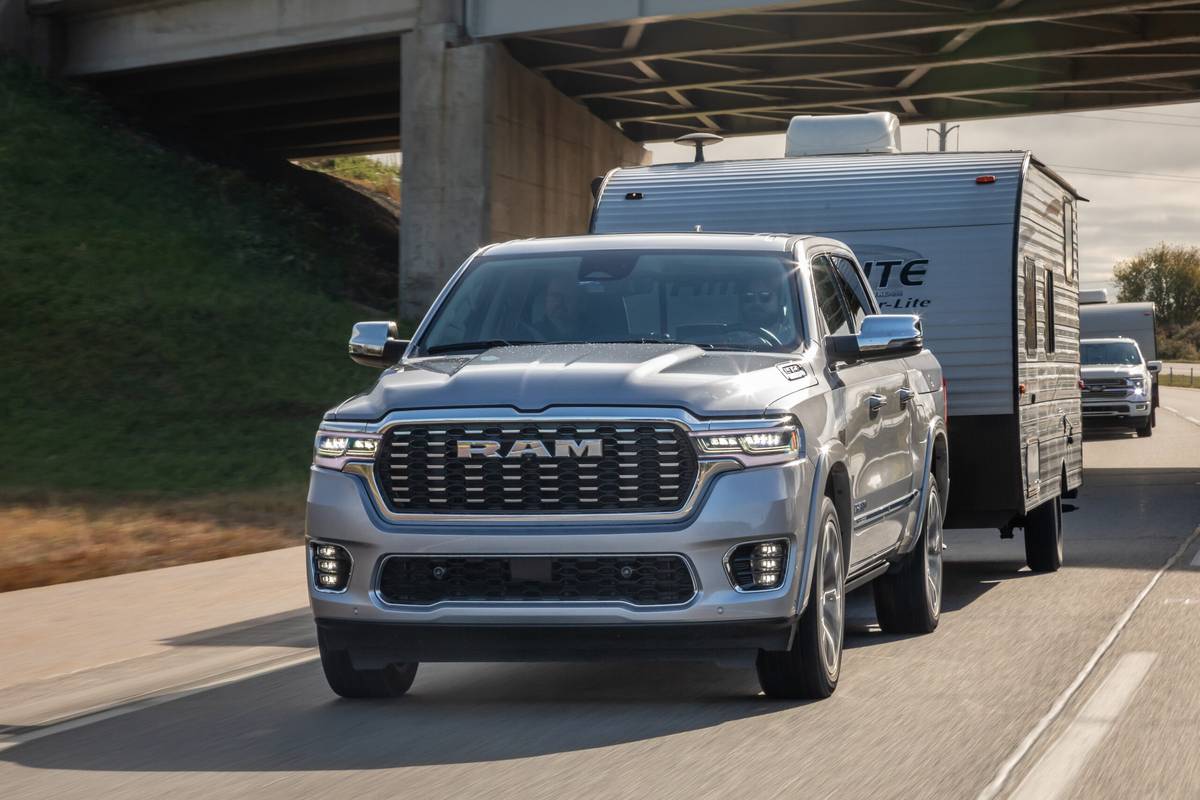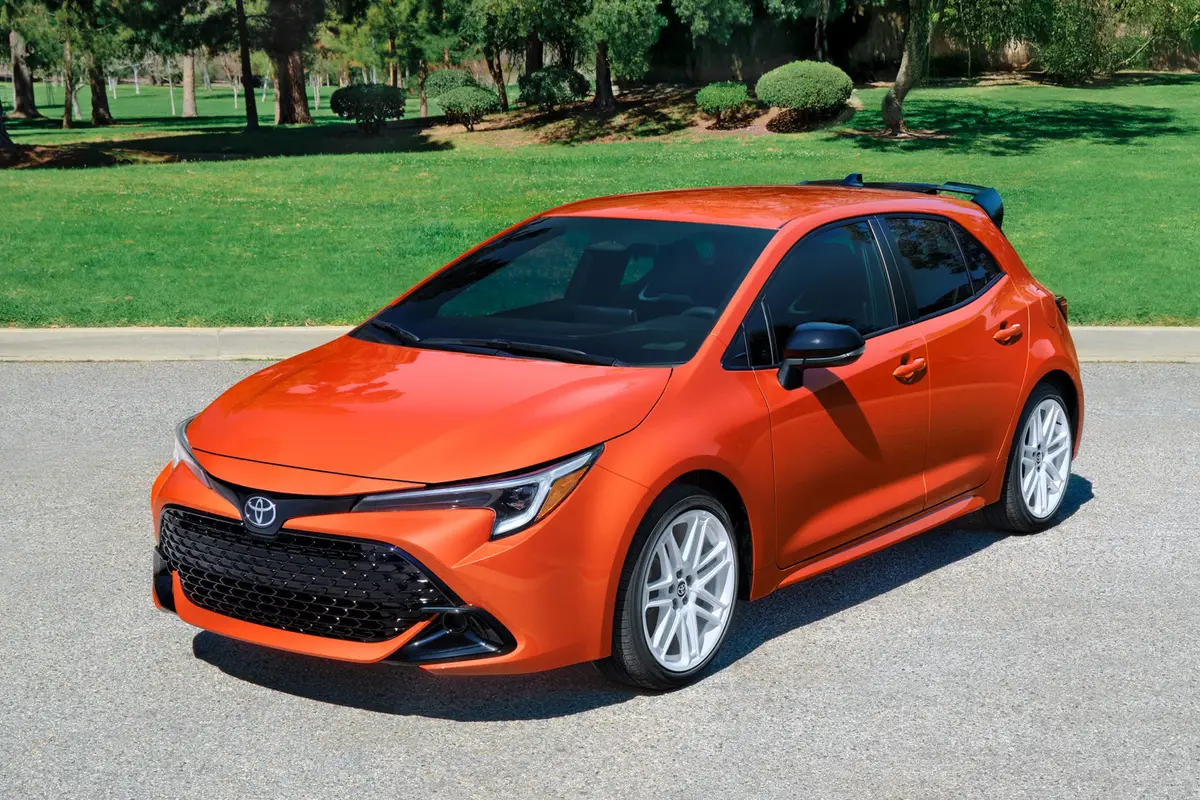chicagotribune.com's view
Standing in the grocery store checkout line, you notice that the guy in front of you pays for his sack of tofu with a credit card, which not only buys the evening meal but also earns frequent-flier miles.
Any guesses as to what kind of vehicle he drives?
A BMW, of course.
The buying habits of those attracted to Bimmers are as predictable as the car itself–and the car is very predictable: a block of granite surrounded by four doors and a kidney-shaped grille. The vehicle of choice for the fashionably correct worshipers of ferns and movies with translations running across the bottom of the screen.
BMW likes to boast that it produces vehicles “with a soul,” machines aimed at those who “appreciate the driving experience.”
Fact is, when Bimmer owners bought into the club with an entry-level 3-Series sedan, it was more for show than go; the vehicle wasn’t as much fun as it was simply fashionable. Most Bimmers were bummers.
“Heresy,” the Bimmer Boomers are thinking.”He probably drives a C-Class Mercedes-Benz like the rest of the fogies.”
But before they pop the buttons on their Calvins, they should ask themselves why, if the old 3-Series was all that good, has BMW gone out of its way to come up with a bigger, faster, roomier, better-looking, better-acting and safer rendition for 1999?
And the new 3-Series has such a focus on keeping its occupants safe that the folks from Volvo will have a difficult time holding down their herring when they see what the Germans have done.
Though we have never much cared for BMW, the 1999 transformation of the 3-Series sedan has forced us to tip our hat for a job well done. We stop short of endorsing tofu over tenderloin, but kudos to the Bimmer brigade, nonetheless.
We tested the 323i and 328i sedans when BMW stopped here to unveil the cars to the media and to stage an “Ultimate Driving Experience” school for BMW owners and prospective owners at the Arlington International Racecourse (or, as it was known in our family when the nags ran there, “the reason Dad drove a Vega”).
Though the free “Ultimate Driving Experience” was a well-kept secret except among BMW owners, it attracted hundreds more than the automaker had room to handle. It will be repeated next year, and we’ll serve ample warning if BMW gives us a holler.
But we digress.
The ’99 BMW 3-Series sedans still have the familiar kidney grille, but they also feature a few subtle and appealing changes. One rap against the old 3-Series was that the smug were snug in the cabin. If you didn’t wear “slim fit” designer jeans, you didn’t wear the old 3-Series gracefully.
The redesigned ’99 sedan (the coupe and convertible will be redone in a year) boast 1.6 inches more length and width, plus 1 inch longer wheelbase and 2.4 inches wider tracking.
The added length provides more legroom in back; added width provides more arm and hip room front and rear; added wheelbase provides a little better ride; and wider tracking better handling and stability, especially for those who want to take BMW up on its boast of being a “driver’s car.”
The 3-Series sedans are the 323i, powered by a 2.5-liter, 170- horsepower, in-line 6-cylinder, and the 328i with its 2.8-liter, 193-h.p. in-line 6. Both engines are upgrades of existing power plants with slightly more horsepower and a focus on more low-end torque for quicker movement off the line.
As part of the preview, BMW set up an obstacle course in the Arlington lot and let scribes loose in the 323i with optional automatic transmission–a General Motors 5-speed that runs $1,200.
An obstacle course isn’t meant to test power as much as it is handling, and the 323i proved fairly agile, the 5-speed automatic smooth and quiet, the anti-lock brakes and traction control as good as advertised.
We moved to remote stretches to and through southern Wisconsin in the more potent 328iwith 5-speed manual.
Our test car was upgraded with the sports p ackage consisting of firmer, more road-worthy suspension and low-profile, better-grip 17-inch radial tires.
BMW says the 2.8-liter 6 is designed to provide more torque early for quicker starts. It delivers, but after those quick starts, the 2.8 sometimes acts as if it just wants to lope along and enjoy the scenery. If you want more liveliness, you move up to the 5-Series.
By the way, BMW anticipates that about 70 percent of 3-Series buyers will opt for automatic transmission but provided only manuals for highway testing.
As a rule, automakers prefer manuals for the press fleet out of fear that buff-book writers who measure high-output performance won’t bother testing the vehicles without manuals, and if the buff books don’t test them, consumers won’t buy them.
But we digress.
What puts the 3-Series sedan in a class of its own is the focus on safety that must make Volvo metallic green with envy.
There are dual front air bags and dual side-impact air bags as standard in all 3-Series sedans. However, those side bags are in the doors, not in the seat, so when you move the seat, the bag doesn’t move with you. Best if the bag is in the seat and not in the door.
The side-impact bags are meant to protect chest and abdomen. Since that leaves the head susceptible, BMW has added as standard a “sausage bag” that deploys out of the roof line to cushion the noggin. As an added bonus– though a $385 one–you can get side bags in the rear doors.
But the air bags offer protection after impact, and the 3-Series has even more goodies to prevent impact, such as four-wheel disc brakes with ABS and all-season traction control as standard.
The traction system features “cornering braking control” that calculates the diameter of the curve and vehicle speed and applies more brake force to the outside wheels to smooth out that curve and help you maintain stability going into and coming out of it.
There’s also speed-sensitive power steering to increase or decrease assist based on how fast or slowly you are traveling.
And, BMW points out that being a rear-wheel-drive machine, it has better vehicle weight distribution that assists in cornering and minimizes body roll.
And, so as not to overlook safety in areas you’d least consider, BMW has designed the electrical system to interrupt power in a collision, so that if the impact causes a short circuit, chances of an electrical fire are reduced.
Other nice touches include raised front seats so passengers in back can rest their feet underneath; a raised hood to give the driver a reference point, as when pulling into the garage; and a micron air filter to keep the cabin free of such matter as pollen.
A leather-like material covering the dash eliminates glare; standard daytime running lamps can be programmed to stay on or off; and a massive trunk has a mat carpeted on one side, rubberized on the other for those occasions when you carry plants and want to rinse off moisture or debris.
Howe ver, there are a few problems, including the traditional stiff seat back that forced us to jiggle around to find a comfort zone after 40 miles. And how can any automaker boast of a “driver’s car” and then saddle the machine with such tiny outside mirrors you need to look twice to see if anything is coming?
The 323i starts at $26,400, and the top-of-the-line 328i (in which we spent the most time), starts at $33,400. Add the sport package for $1,350 with specially tuned suspension and 17-inch performance tires, plus sports steering wheel and seats and leather seats for $1,450. You may want a moonroof for $1,050, and those rear-seat side air bags for $385.
Sales of the old 3-Series suffered because it was small and cramped, was around about seven years since the last change and BMW shifted production from its Spartanburg, S.C., plant back to Germany to make more room for its hot selling Z3 roadster.
BMW insists a larger, restyled car and increased output will resul t in sales of 40,000 units for ’99, double that for ’98.
>> 1999 BMW 328i sedan
© 1998 Chicago Tribune Wheelbase: 107.3 inches Length: 176 inches Engine: 2.8-liter, 193-h.p. in-line 6 Transmission: 5-speed manual Fuel economy: 20 m.p.g. city/29 m.p.g. highway Base price: $33,400 Price as tested: $36,675. Includes $475 for metallic paint; $1,450 for leather upholstery; $1,350 for sport package with sports suspension, sports steering wheel, cruise control, 17-inch alloy wheels, 225/45R17 performance tires and sports seats. Add $570 for freight. Pluses: Restyled. Lively 6. Four-wheel disc braes with ABS and traction control with cornering braking control. Speed-sensitive powersteering. Dual front/side-impact air bags plus side “sausage bag” for head protection of front seat occupants standard; rear-seat side air bags optional. More spacious cabin. Minuses: Side bags in doors, not in seats. For a “driver’s car” why are outside mirrors so small? Seat backs still tad stiff. >>
Latest news



